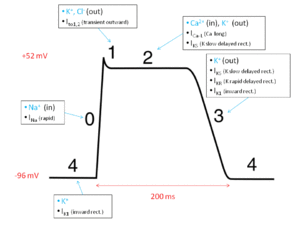Editors Note: As you know, BoringEM has never shied away from controversy. In this Tiny Tip, we present to you a mnemonic for the management of hyperkalemia with ECG changes – wrought with several interesting suggestions with which MANY will avidly jump to post-publication peer review. We welcome the opportunity to engage with you and your comments below. Of note, please stay tuned for the official “debrief” in this discussion on Thursday, September 25, 2014 when Dr. A. R. Morton (Chair of Division of Nephrology) weighs in on the controversy surrounding Kayexyelate! – TC
The goal of treatment is to prevent cardiac arrhythmia, then lower serum potassium. The management of hyperkalemia can be summarized by the mnemonic C (See) BIG K DROP (modified from [1].)
| Mnemonic | What it means |
|---|---|
| C "See" | Calcium: Calcium gluconate (10%) 10 mL IV over 10 min . Calcium is a – cardiac stabilizer. |
| B | Beta agonists: Salbutamol 10 - 20 mg in 4 mL normal saline nebulized over 10 min OR - Bicarbonate: sodium bicarbonate 8.4% (50 mEq) 1 ampoule IV over 5 minutes (Contentious – [3]) – Both of these agents cause temporary intracellular shift. |
| I | insulin: Short acting insulin 10 units IV push followed by ... (see next box!) |
| G | Glucose: D50W 1 ampoule IV over 5 minute given with insulin. Insulin causes– temporary intracellular shift and glucose is given to maintain blood glucose levels. |
| K | Kayexalate: Sodium polystyrene sulfonate 15-30 g in 15-30 mL (70% sorbitol) PO. (Contentious - [3].) Kayexalate may facilitate– gastrointestinal removal. EDITORS NOTE: This is mainly for CHRONIC renal failure. Not for use in the ACUTE phase. |
| D | Diuretics: Furosemide 40-80 mg IV push. This facilitates – renal removal. |
| ROP "Renal unit for dialysis Of Patient" | Dialysis achieves extracorporeal removal. |
A Cochrane review concluded that, when ECG changes due to hyperkalemia are present, IV calcium is effective in preventing deterioration [2]. Thereafter, emergent therapies for lowering potassium levels are nebulized or inhaled salbutamol and/or IV insulin-and-glucose [2].
There is no evidence supporting the use of bicarbonate as monotherapy [2]. Existing evidence does not support the use of bicarbonate for inducing intracellular shift in treating acute hyperkalemia [3].
Kayexalate is an exchange resin used to bind potassium in the intestine when given orally. The two concerns with Kayexalate are its ineffectiveness in lowering serum potassium and its potential toxicity. This has been the subject of a useful review [3]. (NB: Dr. A. Ross Morton will be weighing in on this issue in more depth in his Expert Peer Review of this piece on Thursday, September 25, 2014).
Dialysis is efficient, but usually takes about 2 hours to get started in a patient with no dialysis access.
References:
- Moses S. (2014). Hyperkalemia Management. Family Practice Notebook. Available online: [http://www.fpnotebook.com/renal/Potassium/HyprklmMngmnt.htm]. Accessed: July 27, 2014.
- Mahoney BA, Smith WAD, Lo D, Tsoi K, Tonelli M & Clase C. (2009). Emergency interventions for hyperkalaemia (Review). The Cochrane Collaboration. 3:1-66
- Kamel SK & Wei C. (2003). Controversial issues in the treatment of hyperkalaemia. Nephrol. Dial. Transplant. 18: 2215-2218.
Reviewing with the Staff (Dr. A. R. Morton)
Hah! Gotcha! If you’re looking for Dr. Morton’s review, please check back on Thursday, September 25, 2014. He did such a great job, we decided to give him his own blog post!


